#the future of homestuck
Text
A HOMESTUCK MANIFESTO
I want to think about what comes next after Homestuck.
That’s a challenge to the world as much as a personal mission statement.
I want to see writers and artists and creators making the next Homestuck, taking its themes and binding them into new fabrics, giving life to new creatures even more beautiful and uncanny than the original species.
I hunger to see new forms of story and image evolving with Homestuck in their DNA.
This process is already underway. Homestuck is a massive boulder dropped into the waters of culture, and the full wake of its ripples is still to be felt. But let’s call attention to this process and ask: what would happen if we engaged in it more consciously? If we sifted through our feelings about Homestuck to create something new, deliberately, with great and wonderful purpose?
The tools we need are within our grasp. Homestuck presents itself as magic, but it’s a work constructed in time out of specific storytelling choices. So let’s understand those choices. Let’s understand how Homestuck did what it did, and use Homestuck’s tools to build art that grips the soul of future generations as strongly as Homestuck did ours.
What follows is not a traditional literary analysis. It does not cite its sources; it does not seek to give us a comprehensive understanding of Homestuck. If it does, it does so only to the extent it suits its larger purpose.
Our goal here, our quest, if you will, is not to understand the Homestuck that exists, but the Homestuck that comes next.
Let's begin.
0. THE WILD GARDEN
Let’s lay the absolute groundwork here.
Homestuck is constructed as a re-appropriation of itself. Or to put it another way, it’s a big improvisational move, a process of “yes and”-ing so hard it develops a sprawling continuity.
Tiny details are constantly re-contextualized to become part of something else. A joke might turn tragic. A silly aside might turn into something profound.
But it didn’t have to be that way.
It’s crucial to understand that what we experience as continuities were in fact choices made at specific times. Homestuck is a garden where seeds were scattered in every direction, grown en masse, then weeded down to create patterns and forms.
The shape of the garden is designed to conceal the gardener’s hand. But the gardener’s choices are there, every step of the way.
If we are to follow in its footsteps, what choices should we make?
Let’s talk about themes.
1. THE MEANING CRISIS
Nobody in Homestuck knows what they’re doing.
And neither do we.
All the old idols have broken down. The values we were taught in our childhood fail to measure up to the problems of the world we live in. We grasp after careers and lives we were told would make us happy and wonder why we’re left empty. The selves that we were told were us now fit us about as well as clothing we’ve outgrown. Crises loom, political, economic and environmental, and everywhere it feels like the people who are supposed to guide and lead us aren’t doing enough.
It's widening gyres and slouching beasts all the way from here to Bethlehem, is what I’m saying.
The reason people go absolutely insane for Homestuck is that it depicts this crisis of meaning. It shows the questions we might want to ask, and attempts to provide some kind of answer.
The protagonists of Homestuck struggle with what I’ve called “received narrative.” That is, they’ve inherited stories from their families, from the world, that they try to use to define their lives, and it doesn’t work. But these stories are so familiar that it’s hard to think outside them. They have to develop new stories by which to live. Sometimes they succeed, but other times they can’t escape the gravity of the ones they were given.
With me so far?
Great. Now understand that all this was improvised and discovered largely accidentally over the course of ten years.
Here’s a seed that became quite an impressive tree:
The streets are empty. Wind skims the voids keeping neighbors apart, as if grazing the hollow of a cut reed, or say, a plundered mailbox. A familiar note is produced. It's the one Desolation plays to keep its instrument in tune.
It’s a joke. But it was never just a joke. There’s an idea here of dissatisfaction with the stereotypical idea of American suburban life. Egbert here is looking for something more, dissatisfied for reasons they can’t fully articulate. This is typical fantasy protagonist stuff, but there’s something more here, too.
Eventually it’s redirected towards the idea that there really is an unseen riddler. But let’s put that aside for now.
This page, in its moment, says: your life is not the full picture. There’s something else out there, waiting, that’s going to change everything.
That's a potential set-up for a very powerful payoff. It gives us the sense that Egbert and all their friends are going to have to rethink what they know. That this suburban life is not going to be enough for them, that somehow or other they’re going to encounter something they aren’t prepared for, and they’ll have to find a new way of acting and being. That, try as they might to avoid it, they’re going to change over the course of this journey.
But to understand how they change, we need to talk about SBURB.
2. THE PORTAL FANTASY OF IT ALL
A lot of people like to joke that Homestuck is an isekai. I think it might clarify things to use the term portal fantasy instead.
Portal fantasy is simply the fantasy subgenre of characters, usually kids, going to a magical other world. Maybe they make friends, maybe they learn lessons and stuff. You know the drill. I don’t have to to tell you more because the story structure is already so familiar. That’s what gives it power.
Portal fantasy differs from the related Japanese genre of isekai in that isekai in its current form is much more heavily based on video games such as MMORPGs. In the most pervasive isekai narratives, protagonists are rewarded not so much for achieving personal growth as being able to exploit the game mechanics of a game-like system. That’s pretty different from your typical Narnia scenario.
The influence of portal fantasy is everywhere in Homestuck, especially in the beginning. We have nods to the fantasy films of the 1980s that gave us our contemporary idea of this story structure, such as The Neverending Story (itself, in its original book incarnation, a phenomenal commentary on the genre). Our protagonists are genre savvy; they recognize what’s happening here.
But it doesn’t fit quite right. The odd note is first sounded when Egbert asks Nanasprite if what they’re doing is going to save the world. They’re bit unsettled to learn the answer’s no, that something else is going on here. Next we have the fantasy worlds: the planetary lands each present a veneer of exciting adventure. But their inhabitants, the consorts, aren’t fully-realized people, they’re largely cute animals going through the motions, not really understanding the story they’re telling. The carapacians are a little better, but they’re still trapped in a fatalism that feels uncomfortable.
As things rev up in Act 4, we learn about doomed timelines from alt-timeline Dave and Rose, how your entire existence in this setting may be fodder for something other than you. When we learn the true purpose of SBURB and its froggy details in Act 5, we see that SBURB is more like a biological creature, mainly interested in its own reproductive desires. It was never really about the portal fantasy at all. The kids are just along for the ride.
So when we see that Rose wants to tear through SBURB, find out a way to escape fate, and snatch meaning from the jaws of futility, it makes sense. We’ve been given hints already that this is the conflict at hand: the characters vs the story that’s telling them.
(Note: it’s certainly possible to have a reading that SBURB is not evil so much as empty, that it reflects what you bring into it, that its will for you is your will for you. But that’s also a difficult thing, right? If you lack self-understanding, it’s a struggle to bring about your ideal reality.)
What we haven’t mentioned yet is that this is all mediated through the lens of video games. Which makes perfect sense. Because where do we seek meaning, especially as kids? In imaginary worlds that make more sense to us than real life, that give us achievements to take pride in and clear objectives to pursue.
SBURB evokes mechanics from games like Final Fantasy. We see its players complete objectives, cast magic spells, gain power-ups with colorful costume changes. But unlike the narratives implied by traditional video game progressions, leveling up doesn’t mean you grow as a person or process your trauma. Later, in Act 6, when we meet a player who has made his life about winning the game (Caliborn), it’s horrific to behold.
Homestuck is a portal fantasy, but it’s fundamentally a portal fantasy about games. It’s a portal fantasy that shows us how characters seek meaning in being the best at arbitrary game mechanics, but ultimately fail to find it.
So I guess…it actually is an isekai? Huh. Wild.
(But seriously, Homestuck is actually fairly prescient in predicting the ideas that come out of isekai and LitRPG. It’s engaging consciously and deconstructively with the weird ideas of self-fulfillment these genres are drowning in.)
So what might a Homestuckian work look like? It will almost certainly critique a false narrative we live by. It may comment on portal fantasy, or our personal satisfaction that comes as easily as playing a video game. But it doesn’t have to be limited to these things. It might talk about our popular TV shows and movies. It may take apart what’s flawed in Marvel, the latest triple-A game, or the modern dark fantasy novel.
Among its tools will be discomfort. Showing a disconnect early on between our character’s expectations and their happiness can serve as foundation to build on, so that when the flaws of the genre narrative are revealed, it feels like the truth. We may see characters who accept their narratives passively, or rebels like Rose Lalonde, who chose to rip everything apart in search of something better.
These are only some of the possibilities.
When I tell you the stories we live by mislead us, what is your relationship to that? If you were to tear these received narratives apart, what would you focus on, what would you try to say? The art that comes out of this question will be deeply personal to the soul who makes it.
But here’s another question:
Just who is giving us all these narratives, anyway?
3. THE PARENT FLIP
The world we live in was not made by us. It was shaped by forces that predate us, over which we have no control and are born into the grasp of without the knowledge of how to escape.
For instance, our parents.
The guardians who raise us provide our template for how to interpret life. We spend a large part of our lives immersed in the world they built, believing as they believe, living by the values that they instruct us in, so that we might carry their goals forward to the future.
This is an effort that is certain to fail.
Because the problems of today aren’t the problems of twenty or thirty years ago. At best, their messages can only to help in a limited way with the crises we go through as we live our lives. At worst, they actively hinder us from dealing with them productively.
If we are to escape the broken patterns of our world, then we need break out of the stories an earlier generation gave us.
How are parents discussed in Homestuck?
Initially? As jokes.
If we take our “future knowledge” goggles off for a moment, we can see that the early depictions of the kids’ parents are a goofy parody of standard parental tropes. Mom and Dad are nameless, faceless, exaggerated cartoon stereotypes, and conflict between them and their children is initially expressed through a silly video game fight.
There’s a seed of something real here, though. What we’re parodying is a familiar trope of tension between parents and children in kids’ fiction and YA fiction. But that trope exists for a reason. This conflict is rich with potential for any story about growing up. And Homestuck has smuggled the idea of it in as a silly RPG parody.
So we can extrapolate, for instance, that there’s tension between Egbert and their father in part because Egbert doesn’t know yet who they want to be, and that Rose and Mom’s relationship is awkward and contentious, with alcohol involved. We see that there’s something profoundly uncomfortable going on between Dave and his Bro, and Jade’s life in the shadow of a dead Grandpa suggests a psychology that’s not entirely a healthy one.
Understand that I’m not saying that all this was there from the start. Rather, a choice was made to develop these interesting possibilities out of the jokes, to tell a story about how parents that act like these ones might have affected their children.
A major turning point in this regard is when Egbert learns their father’s seeming clown obsession was the result of a failed attempt to connect with them. It’s quite silly, but it plays around with the idea of a gap in perception between parent and child. It’s also a sign the story’s starting to take more of an interest in character psychology, suggesting that what Egbert processes consciously is not the same as their deeper unconscious feelings. This in turn can become a setup for a portrait of Egbert as someone who represses things they don’t want to think about. From this moment, in the long term, comes June Egbert.
When the psychology machine revs up for all the characters in Act 4 and Act 5, it’s able to do so because this foundation was laid.
We also, as early as Act 3, get hints that the parents have intentions and personalities outside of how the kids perceive them. The original purpose is to hint at a larger conspiracy around SBURB, with Mom building a secret lab, Dad trying to investigate the mystery, and Grandpa jumping in and out of time. But what this suggests is that the psychology of the parents might at some point come into play.
But the most exciting development in the relationship between parents and children is Act 6.
The great role reversal. The parent and child flip.
How do you make your faceless parent figures into characters?
By making them kids.
We’re so used to this concept now t that it’s hard to remember how wild it is that Roxy is a teen version of a main character's mom. But the concept is genius. Meeting these characters on the same level forces our protagonists to understand them as people and reflect on their fallibility.
For us as readers, it adds detail and nuance to the cartoonish portraits we got in the beginning. Conversely, we also see what our protagonists might have been like as parents themselves—and turns it from a story of “parents just don’t understand” to a story of how people, despite their best intentions, can wound each other.
(The Homestuck Epilogues are a difficult text to evaluate, but one of the best things within them is Egbert’s arc in Candy, where we see how Egbert might have done as a parent, how their struggles with finding purpose in the world might lead them to embrace a narrative of parenthood yet struggle to have a good relationship their kid. It’s brilliant, and the culmination of everything we’ve talked about here.)
Thus the Homestuckian work of art will be concerned with themes of parents and children. It will play with the boundary between what children understand about their parents and what they don’t. It will show parents as people—fallible people, who make mistakes with severe costs, whose stories fail their children and themselves. It may build from a simple base of what children understand, or it may weave parent and child perspectives together. It may even show us how children fail when they become parents themselves. It will show us the cycles we are trapped in, how we wound and are wounded by our context.
And it will force us to look for a way out.
4. CLASSPECTS AS SIGNPOSTS
Hey. You want to know a secret?
Come closer, and I’ll whisper it to you.
Classpects aren’t actually all that complicated. Ultimately, they boil down to one thing:
Symbols we can use to construct a self.
If Homestuck is about a crisis of meaning, then classpects are part of its answer.
What do we do, when the world gives us no story we can live by?
We make one. We make one out of whatever symbols and messages we can find and put together from the stories we’ve read, from the people who teach and inspire us. Such collages are powerful things. They give us a way out of the dark, they give us a sense of something we are and can be, where there was nothing before.
They give us, in short, a personal mythology.
Classes and Aspects have often been read as codes to be unpacked and solved. It might be more productive to see them as creative tools, signposts designed not to narrow down meaning, but to allow us to explore it.
For instance, the portrayal of Light in Homestuck is unique. As a symbol, it combines notions of brightness, knowledge, future, luck, wealth, and narrative focus. These things aren’t inherently linked out in the world, but they are here, and that’s a choice, and an interesting one. It encourages us to imagine connections between these concepts, and to see if they have any relevance to ourselves. Identifying with the concept of Light, in other words choosing to value clarity, luck, and importance, might be a powerful tool for finding one’s way in the world.
Classes play with signposts at an even more basic level. Sure, we can talk about what a Knight does in the context of the story.
But a knight is already a powerful symbol. We bring so much cultural context to it. The word conjures up images and narratives of devotion, duty, violence, the slaying of dragons, armoring oneself against the world, and the rescuing of princesses. If we put that together with a concept like Time, we get a distinct character. If we put that together with our own experience of the world, we can create powerful concepts for who we want to be.
Interestingly, this complicates what we said about SBURB. As much as our protagonists struggle to find meaning within it, there’s still something there that they can latch onto. Classes, aspects, denizens, even consorts and lands—these things don’t have to be devoid of meaning. We can choose to affirm them; we can build something out of them, and say, yes, this is me, this is myself.
But it’s a double-edged sword.
We are responsible for the narratives we choose to live by. And we may find ourselves falling into a narrative that hinders us more than helps us, that creates a self-destructive self.
What does it mean to believe deeply that you are a thief, that taking from others to benefit yourself is the best way or comes to you the most naturally? What does it mean to tell yourself over and over that you’re a prince, with all the attendant baggage of power and grim responsibility that comes with that concept? Or, to follow the path further, what does it mean to tell yourself over and over that you are a destroyer or must be destroyed?
If we are to escape the story we’re trapped in, we must take care, lest we trap ourselves in a story of our own making.
Homestuck never quite resolves the ambiguity around these symbols of self, around whether SBURB hurts or helps, whether classpects are things you create or things that create you. But this ambiguity is a productive one. It gives us symbolic tools we can use in the creation of meaning, and it shows us the side of them that should make us wary.
The work that is to come after Homestuck will be about symbols. It may show us how we seek them in popular culture, or the people around us. It may use some of the clusters of meaning that that we see in Homestuck, but it will not be limited to them. It will write its own language of symbols, joining Light and Time to notions like Memory, Need, Rupture, and War, and be filled not just with knights and princes but brigadiers, lancers, healers, druids, taxidermists, sentries and waifs. It will build with tarot cards, enneagram types, and Babylonian gods. It will place all the signposts we’ve created in millennia of existence into new contexts and meanings.
By such means will it show us a way forward.
There’s one kind of symbol we haven’t talked about yet, however.
The kind that holds a mirror up to the world.
5. THE POWER OF ALTERNIA
There’s a reason dystopias have been so popular in young adult fiction. Sure, they’re cliché now, but they speak to something raw and visceral.
When you’re growing up into a world that doesn’t make sense, it’s natural to find refuge in emotional extremes. Stories of blood and violence, fates worse than death, and governments that demand horrific things of their citizens speak to the anxieties of the adolescent mind. They validate the feeling that something is wrong—that the world we’ve inherited is broken and unfair and has no place for us. And they’re right.
Alternia taps into these dystopian feelings perfectly. What makes it so fun is that it’s an inversion of a teenage fantasy. It’s a world where there are no parents, where kids can have access to power and violence, where you can sit around and play video games and design your own house. It almost feels like a response to the “parents don’t understand” themes of the early acts.
But the dystopia’s there, and it’s sneaky. A land of lost boys and girls isn’t actually all that great to live in. It’s lawless, survival of the fittest, with children killing each other left and right. And the future adult roles most of the troll kids aspire to are a glamorous veneer over competition for slots in a fascist military hierarchy. Which is to say nothing of the blood caste system as a way in which the kids are taught by their world to abuse and exploit each other. Crushes, personal slights, competition for status, group dynamics, attempts to define identity – all these familiar teenage dynamics play out on a backdrop of maiming and murder.
Which is perfect. Because when you’re young, all those social interactions genuinely do feel like life or death, and adulthood a regime of exploitation and horror bearing down on you. Alternia is a heightened, exaggerated version of reality. It expresses an emotional truth, not a literal one, validating our most intense feelings and giving us a road map to understanding them.
No wonder so many people wanted to skip to Act 5 and get to the trolls.
(See also Hiveswap Friendsim and Pesterquest, which explore these themes really really well.)
And Alternia, for a world where parents aren’t really a thing, tells us a surprising amount about the parental generation. In mid Act 5-2, Ancestors are added to Alternia’s wordbuilding, and we learn that as much as the trolls skipped having traditional parental figures, they were never devoid of role models. The deeds and exploits of notable figures throughout ancient Alternia gave them models to think about each other and themselves—even when those models were toxic ones. In a way, this isn’t so far from the human kids at all.
Furthermore, as time goes on, we acquire an origin for Alternia’s fascist worldview. Doc Scratch, manipulator of society, stands in for all those aspects of the world that work to create the false narratives we are born into, a true evil father figure – or uncle, if you prefer. And he's an extension of the ultimate evil father figure, Lord English, who controls not just Alternia but the timelines of the human children as well, whose belligerence and apathy give us aeons of toxic narratives and abuse. We see that story played out in Alternia in every interaction, in every moment, the beliefs its architects live by.
This is the power of dystopia—it can hold a broken mirror up to the world we live in.
Therefore the Homestuck that will come after Homestuck will worldbuild gardens of horror. It will not pull its punches but show us insidious societal systems and the effect they have on the people who live under them. It may depict fascism, authoritarianism, feudalistic tyranny, or all three. It will be unafraid to evoke blood and guts but use them to paint a picture of what we want, what we fear, and how we break under our false horizons.
As it depicts the path out, so, too, will it have its reverse side—it will show us all the hells and purgatories we’re trapped in.
6. SAILS TO THE WIND
Much has been written (including by this very author) about Homestuck’s metafictional aspects – the way it comes to foreground a more direct clash between character and narrative.
But the point I want to make here is that the metafictional angle wouldn’t work without these earlier choices. They allow the comic to talk about these concerns long before any notion of canon rears its head.
There are many ways of approaching these themes, and we don’t have to be limited to notions of Ultimate Selves and Beyond Canon to explore them. Such things are valuable, but they are only one retelling of the myth. If we are to make the next Homestuck, we must make our own.
I want to illustrate the space of possibility by offering some examples of works that explore similar themes. Note that I’m not saying these works were influenced by Homestuck in any way, but rather that they use some of the same tools to speak to the same questions, anxieties and concerns.
In trying to make what comes after Homestuck, we might consider:
Revolutionary Girl Utena, which foregrounds the archetype of the Prince as duelist, tyrant, and hero and dares its characters to break free from the false reality that shapes even these aspirations and dreams.
The Familiar by Mark Z. Danielewski, author of Houseof Leaves, whose core narrative concerns an twelve-year-old girl in thrall to an entity whose intentions are unclear but may be shaping the fabric of reality itself; which depicts the inner lives and uncertainties of her parents with just as much detail as they struggle, and sometimes fail, to make the right choices to help her; a story which, even in its incomplete form, explores a notion of a greater S.E.L.F that is not just you but also those who share something with you, where characters from other realities blur into transcendent archetypes in this one.
Digimon, perhaps the quintessential work of portal fantasy, not only Digimon Tamers, which steers the genre into a place of trauma, cosmic horror, and adults horrified by children saving the world, but also Digimon Adventure, which creates strong character arcs for eight very different children as they try to navigate a strange alien world, and shows us their struggle to reconcile with their parents as part of the process of understanding themselves.
The Neverending Story by Michael Ende,foundational text for Homestuck, which tells us not only about the rich possibilities inherent in reading oneself into fantasy worlds, but also the terrible potential for harm in making oneself an emperor over them.
Pale, by Wildbow, author of Worm, an urban fantasy story about three teenagers thrust into a world of magic and murder, a world where symbols literally create reality, where concepts like Carmine and Aurum have a powerful pull, where the Self is something that can be nourished or taken apart and put back together, a story where the parents are not just supporting cast but fully realized people forced to reckon with the ways in which they have deeply failed their children, and which contains perhaps the most thorough investigation of the question of “is it good for children to go on magical adventures?” ever committed to the page.
Heaven Will Be Mine, by Aevee Bee,in which the giant robots we pilot through space become the symbolic manifestation of our inner selves and our way of bringing about our ideal reality, and, relatedly, We Know the Devil, in which the repression of those selves causes them to burst out from us in terrifying and glorious new forms.
Crow Cillers, by Cate Wurtz, an often trauma-filled horror comic in which a group of kids and, eventually, adults, tries to fight back against an ever-present death cult that has its grips on every corner, all the while encountering Psyforms, beings made of pure mind, while characters from television and cartoons dance in the margins and all the while the line blurs between audience and art until it becomes difficult to tell who created who—a story that asks what it means to find meaning in stories when the corporate entities that own them are trying to devour us.
It's a tragically short list, I know. But perhaps it conveys some of the angles we might take.
We can also look at works that are known to have inspired by Homestuck. There aren’t many yet, but there are a few.
Undertale is famous for its Homestuck influences, with parallel timelines, an idea of agency that persists across them, and a contentious relationship between player and character, but for my part, I’m just as interested if not more so in Deltarune, which seems to be slowly building a grand thesis about portal fantasy, where the kids' adventures in the Dark Worlds seems to be offering them an escape and helping them become their best selves—but hints at a coming challenge to that simple worldview in the question of who’s really experiencing that escape.
The Locked Tomb, by Tamsin Muir – This is the big one, that really shows what building on Homestuckian themes can achieve. It turns out there really is an audience for weird aggro formalism in scifi publishing if you make it sufficiently gay. But smartly, like Homestuck, the Locked Tomb builds its weird mysteries gradually, adding on layer after layer on the solid foundation of characters we can follow and get invested in. There’s so much to notice – there’s the highly categorized teenagers involved in a murder feud, there’s the constant whiplash of humor and tragedy, there’s the endlessly open spaces in the story to interpret and project on to.
But to me, what stands out the most is the portrait of God and his court as every bit as emotionally chaotic as the sniping teenagers. You go to heaven, and God’s making out in the corner with his friend group, and you look for the adult in the room but the adults in the room don’t know what they’re doing and they never really did. It’s a portrait of the parents, it’s a portrait of the Ancestors, it’s a portrait of the gods of the new world, and it’s exquisite.
The Locked Tomb gives us a world at war with its own mythological narrative, rich with angst and irony. It’s a worthy successor to everything Homestuck was doing. It shows us how much these themes can say to us, and it gives us a hint at how powerful Homestuck's legacy might be.
7. THE APOTHEOSIS OF HOMESTUCK
There’s a lot of discussion about how to continue Homestuck. How to do it justice. What post-canon might look like, and what it might not. What fan comics, what fan fics, what semi-official works truly live up to the spirit of its characters and its multiverse.
To be clear, those discussions are awesome. I’m so glad those things exist, and it’s wonderful to see them unfolding.
But I don’t want the process to stop there. I'd be disappointed if it was only about adding to and re-articulating Homestuck itself.
I want this—
—This multifaceted, complicated, emotionally laden thing that is the experience of engaging with and creating with and interpreting Homestuck—
To go out into the world and to be infused into the world, to become waves spreading further and further. I want to experience the Homestuck artistic movement, the Homestuck school of thought. I want it to be an influence on the fiction of the coming generation of authors, and the next, and the next.
I want Homestuck to be one of those albums that's too obscure to be known by the general public, but everyone who listened to it went on to start an enormously successful band.
Homestuck can appear like a thing that was conjured out of the ether, but it isn’t. It’s a product of a particular time.
But that in itself is profound. When you create art, you reach back to all the things that have shaped you, and you listen to what the world around you needs, and you try to say what needs to be said. Which means you're a part of a history and culture that needs to say those things, which will be different from the things that needed to be told yesterday, and different from the stories that will be needed tomorrow.
There’s no otherworldliness to it, no platonic other reality. But for all I've talked about art being made of choices, there's still something transcendent here.
To make Homestuck—and to make art inspired by Homestuck—means being a node in a web formed of millions of people, where a light passes down the chain to you, and for the briefest of moments, you get to be filled with its presence, before it moves on to the next person in the chain.
That light isn't yours. Not really.
But at the same time, you do get to choose how that light manifests.
And to engage with that process consciously—to think deliberately about what we want to create—that gives us power and agency over that process, our sense of the world, and ourselves.
So let’s do this. Let’s make the thing that Homestuck is telling us can exist, the thing it’s paving the way for, the thing we know in our soul can come to be.
Let’s make the next Homestuck happen.
—Ari
POSTSCRIPT
“To put out a manifesto you must want: ABC
to fulminate against 1, 2, 3
to fly into a rage and sharpen your wings to conquer and disseminate little abcs and big abcs, to sign, shout, swear, to organize prose into a form of absolute and irrefutable evidence, to prove your non plus ultra and maintain that novelty resembles life… I write a manifesto and I want nothing, yet I say certain things, and in principle I am against manifestoes, as I am also against principles… I write this manifesto to show that people can perform contrary actions together while taking one fresh gulp of air…”
— Tristan Tzara, “Dada Manifesto 1918”
"The cyborg is resolutely committed to partiality, irony, intimacy, and perversity. It is oppositional, utopian, and completely without innocence....the cyborg would not recognize the Garden of Eden; it is not made of mud and cannot dream of re-turning to dust...This is a dream not of a common language, but of a powerful infidel heteroglossia. It means both building and destroying machines, identities, categories, relationships, space stories...I would rather be a cyborg than a goddess."
— Donna Haraway, "A Cyborg Manifesto"
“What we need is works that are strong straight precise and forever beyond understanding... let each man proclaim: there is a great negative work of destruction to be accomplished. We must sweep and clean…to divest one's church of every useless cumbersome accessory; to spit out disagreeable or amorous ideas like a luminous waterfall, or coddle them—with the extreme satisfaction that it doesn't matter in the least…freedom: Dada Dada Dada, a roaring of tense colors, and interlacing of opposites and of all contradictions, grotesques, inconsistencies: LIFE.”
— Tristan Tzara, “Dada Manifesto 1918”
“These are really the thoughts of all men in all ages and lands, they are not original with me,
If they are not yours as much as mine they are nothing, or next to nothing,
If they are not the riddle and the untying of the riddle they are nothing,
If they are not just as close as they are distant they are nothing.”
—Walt Whitman, Song of Myself
𖤓
#homestuck#homestuck analysis#what comes next after homestuck#the future of homestuck#homestuckian art#you are actually 100% sure walt whitman said that
315 notes
·
View notes
Text
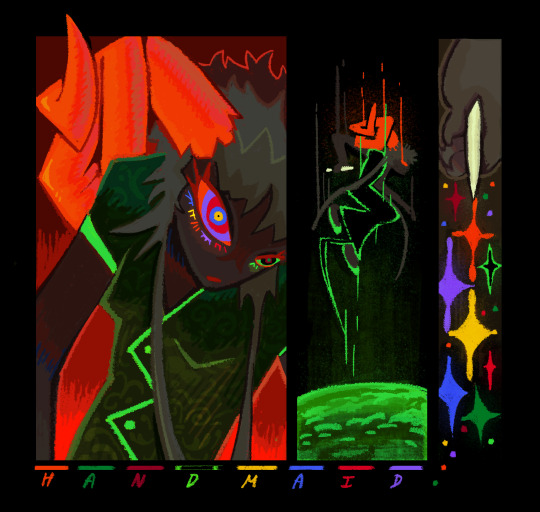
heiress eternal
#so many thoughts about her#the handmaid#the handmaid homestuck#homestuck ancestors#damara megido#homestuck#egg art#according to hussies book aradia was in contact with the handmaid to receive game instructions#which is interesting considering megidos can speak to the dead and the handmaid is one of the few ancestors alive#so either handmaid channeled a dead aradia or future aradia channeled a dead handmaid#handmaid could of also just manipulated the timeline to make sure aradia was the catalyst for the game being played#or something less more or equally complicated#and without this we just have to assume its maid powers allowing aradia to have flawless instruction of what to do or shes just a#level 3000 gigabrain girl genius at 13 years old#and instead of putting that interaction in the story we got. the dancestor flashes#so im a little miffed about it really
4K notes
·
View notes
Text
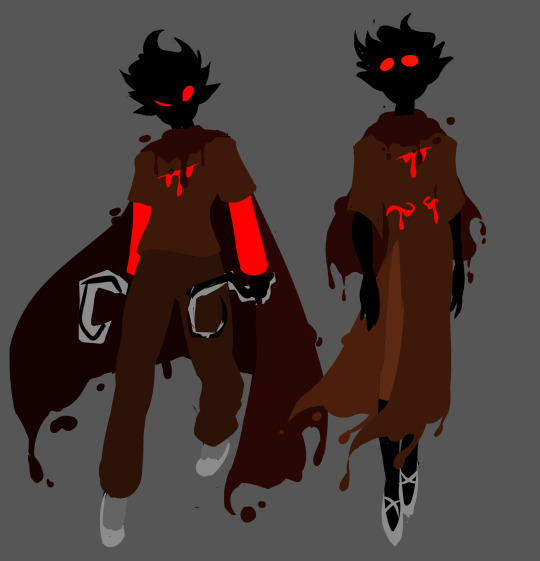
concept: blood players god tier fits behaving more like liquid (moving slightly, droplets coming off and disappearing into nothingness). for example knights cape and seers hood + lower part of the overgarment would act like that. no idea how to clearly explain this i just think its neat
#homestuck#karkat vantas#kankri vantas#homestuck fanart#god tier#knight of blood#seer of blood#blood aspect#i have so many lil design ideas for how to individualise aspects from each other mmmgh#might do more in the future but this ones my favourite#also was thinking that heart players hoods should be shaped more like hearts
3K notes
·
View notes
Text

👾 Two guys who look a lot alike and I can't get them out of my head 👽
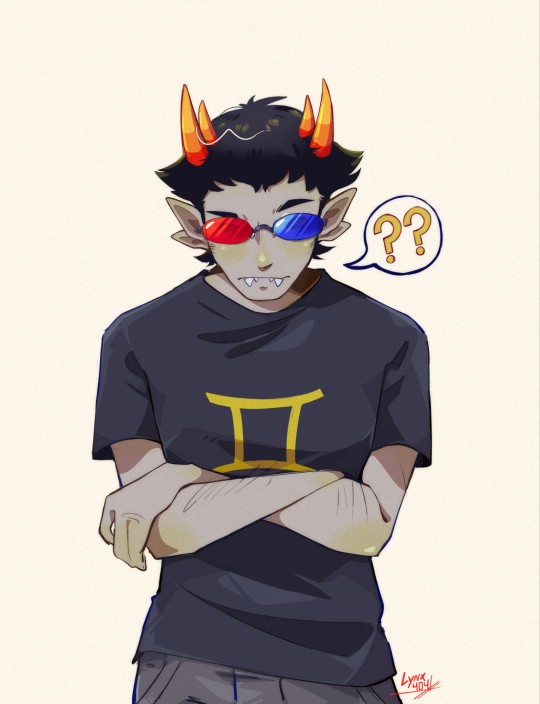
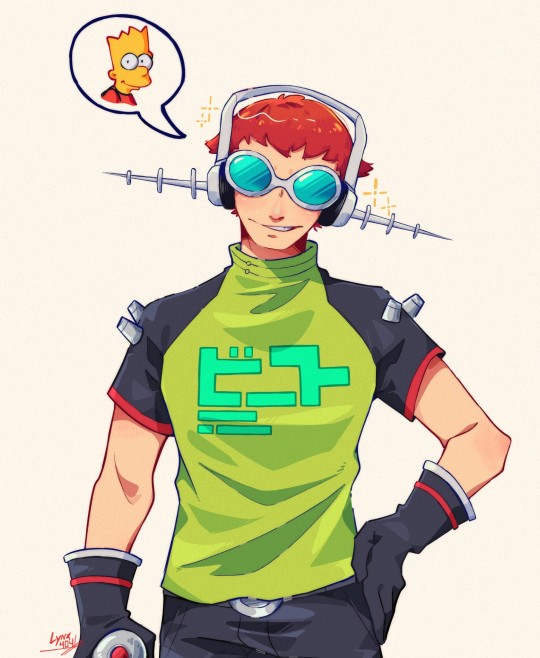
Separately
#homestuck#homestuck art#homestuck fanart#hs fanart#hs sollux#sollux fanart#homestuck sollux#jet set radio#jet set radio future#jet set radio fanart#jsr fanart#beat jsr#beat jsrf#fanart
592 notes
·
View notes
Text

the moment made Karkat remember a novel he finished the day before and got sidetracked lol
#i wanted this to be more nsfwish and rendered but im sleepy#maybe in the future ill do a redraw heh#davekat#karkat vantas#dave strider#homestuck#doodles#og art
1K notes
·
View notes
Text

HAPPY 4/13
This was a really fun project and even if im not that active anymore i LOVE this community
(click for full resolution)
collab art with:
@kripsybac0n125
@badlydrawnaradia
@drawnroxystrider
@askdesperado-rocketchairs
@some-effort-trickster-jake
@badlydrawnjane
@poorlydrawneridan
@aaaaskarseniccatnip
@expertlydrawnroxy
@badlydrawnbabydirk
@askbronya
@badlydrawngcat
@badlydrawnjade
@badlydrawndirk
@badlydrawndavepeta
@badlydrawnlilseb
@badlydrawn-brostrider
#hs#homestuck#bdhs#mspa reader#future mspa reader#jade harley#dirk strider#bro strider#nepeta leijon#roxy lalonde#roxy strider#eridan ampora#gcat#robro#baby dirk#aradia megido#lil seb#jane crocker#trickster jake#jake english#davepetasprite#davepeta#bronya ursama#tavros nitram#art#pixel art#animation#4/13
498 notes
·
View notes
Note

Since the last one only went up to the end of act 3. Here it is!!! In all it's glory.
HOMESTUCK
(minus the flashes bc the swf files didn't play nicely when merged with gifs so i had to remove them)
HELL YES!!!!! its finished.....
#should i pin this in my blog y/n#transgendercombat#ikna answers#homestuck#gif#gifs ever#for future reference#1k
3K notes
·
View notes
Text

oh to trust another troll w a sharp object against yr head
#homestuck#solkat#sollux captor#karkat vantas#2023#vioart#cut my hair recently..#told the barber to hv fun w it and he gave me the thin mullet of a jrock idol#anw i think its. hm.#combing thru old content i do notice for every year since hs ended theres at least 5 ppl going like. “man... solkat huh”#and despite it being 5. its crazy how the weight of that sentiment can echo across hundreds of ppl going yeah in their minds#how.... to explain to non-slkts just how inconsolable we are#dvkt can fill the heart and ersl can tickle the funny but . yk. solkat is silly chaotic dramatic and sincere everything-in-one#ultimately i do think dvkt endgame was the right move but. well. slkt is imprinted in my dna as the otp ever....#do u know how CRAZY it makes me that slkt both ended up w time players!!! i have a future post planned on this HRAGH.#maybe feb/march 2024 hm. its a rather 👁️ one that i still need time to marinate on
727 notes
·
View notes
Text
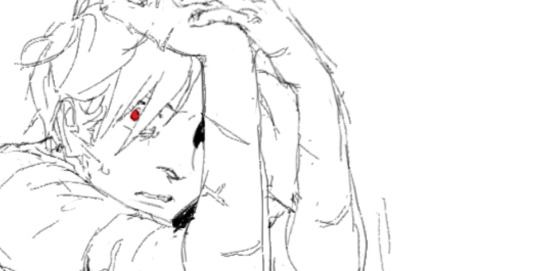
hes having a good time 👍
557 notes
·
View notes
Text

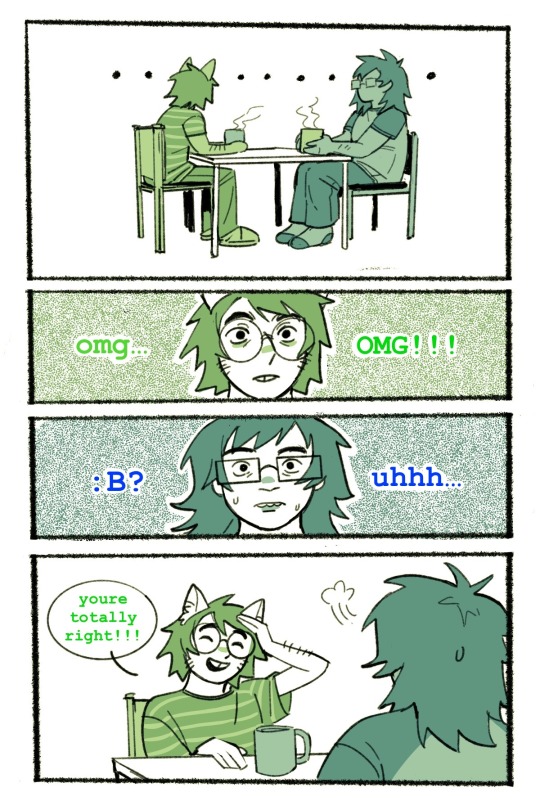
transmasc jade picking a name :]
(having fun with some comments I got here and on twitter. i think any name could be good though :3)
#homestuck#hs#transmasc jade harley#june egbert#trans sibling chat <3#jade harley#this is set ambiguously in the future from my other tmasc jade post#having fun with this i hope you all enjoy it#hamsterfather
292 notes
·
View notes
Text




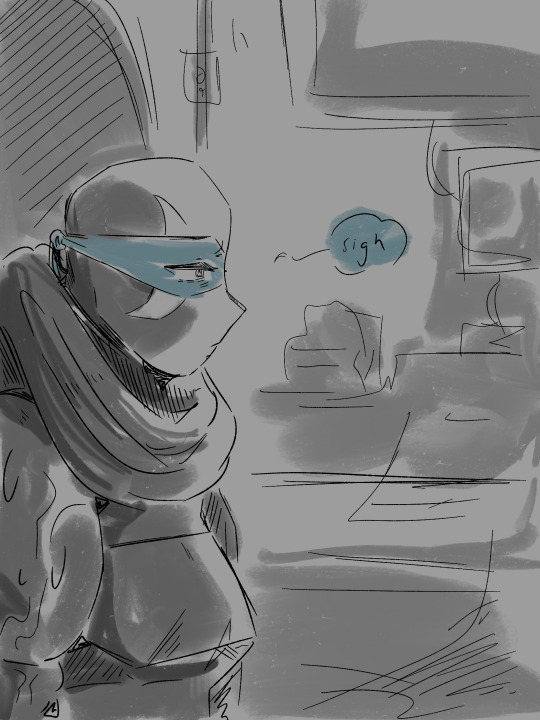


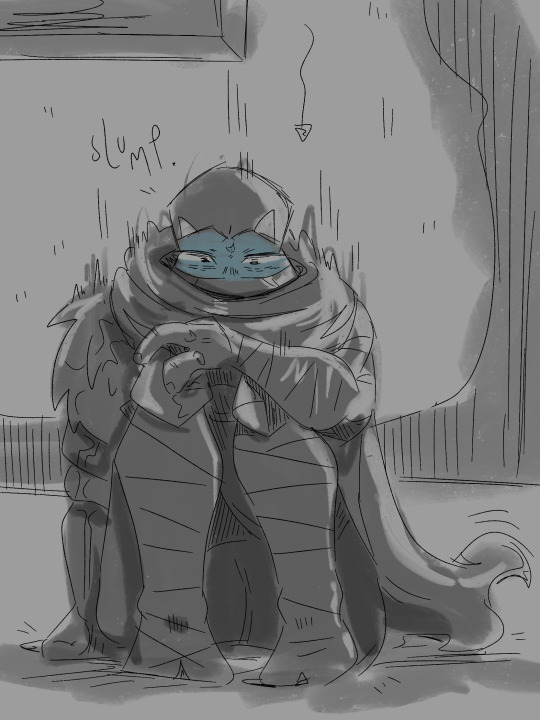






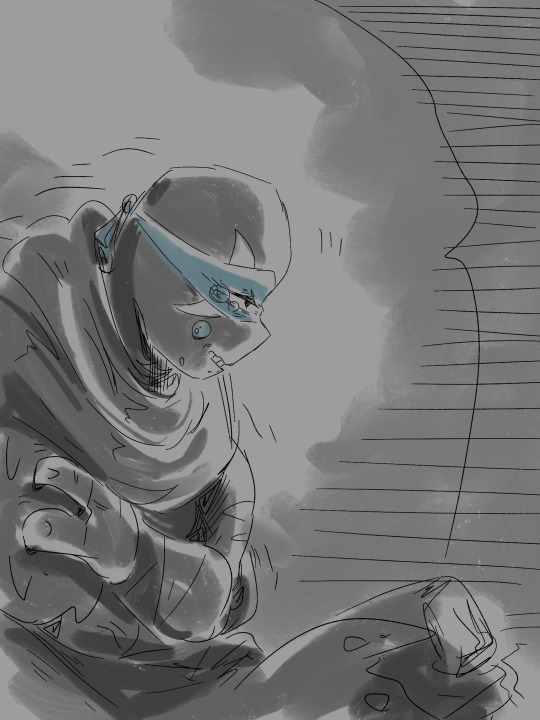



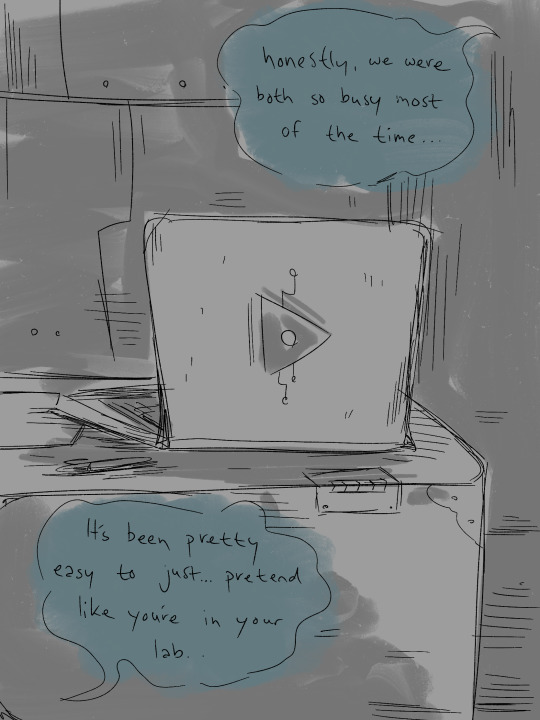



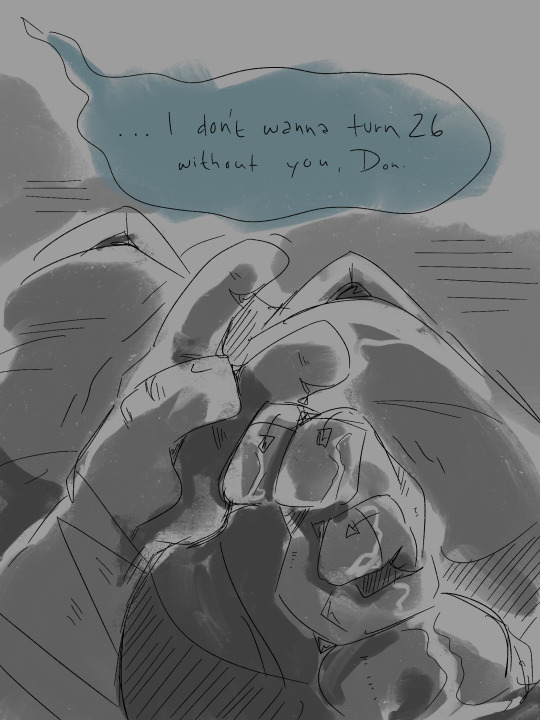

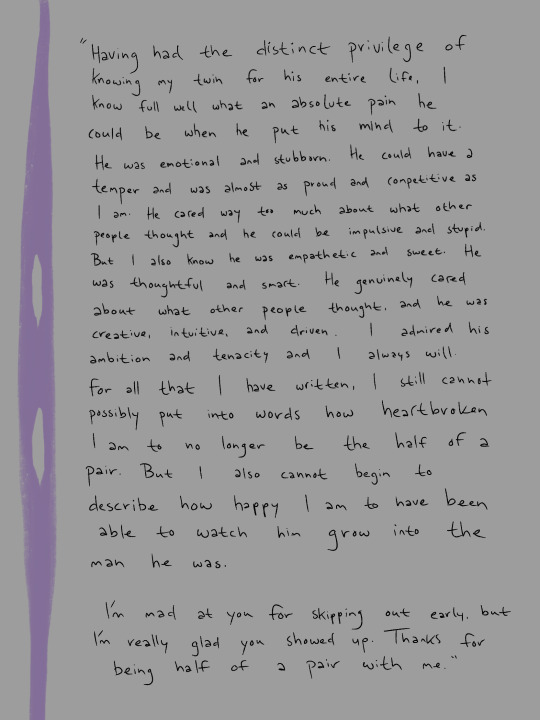
part one.
to dumbass twin brothers everywhere. april 13 1997 - may 11 2022.
#this is called projecting kids#and look i know its the homestuck day#but this is my birthday#it was my brothers birthday#and as far as im concerned now its their birthday too#fidgetwing#tmnt#rottmnt#rottmnt movie#rottmnt leo#rottmnt donnie#rottmnt fanart#rise of the tmnt#rottmnt bad timeline#rottmnt bad future#rottmnt comic#f!leo#future leo#disaster twins#grief#death#angst#rottmnt movie spoilers#rise leo#rise donnie#tmnt fanart#tmnt 2018
2K notes
·
View notes
Text
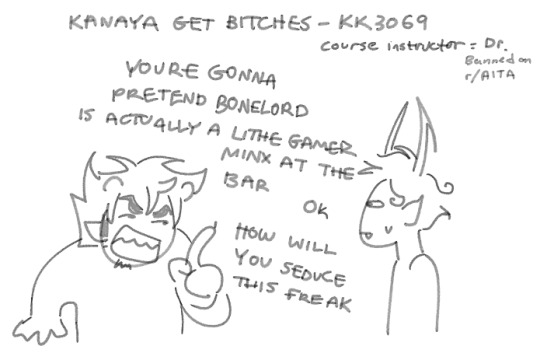



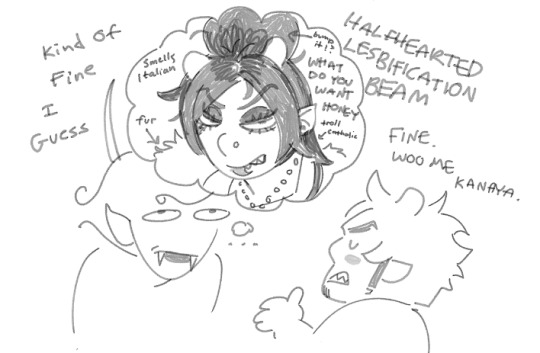

i never posted this lol
#i wish we got just a little more time before kanaya met rose like she needed to go on a quest for love a soulsearch#not for any deep character fleshing out reasons but because it would be funnie#laying down the schmooves on rose Hey Girl “What?” Um#egg art#homestuck#kanaya maryam#sollux captor#karkat vantas#kanayas isnt really about. the abstract beauty and nuances with courting#but thats ok her peculiar woman swag will carry her to marriage in the future
1K notes
·
View notes
Text
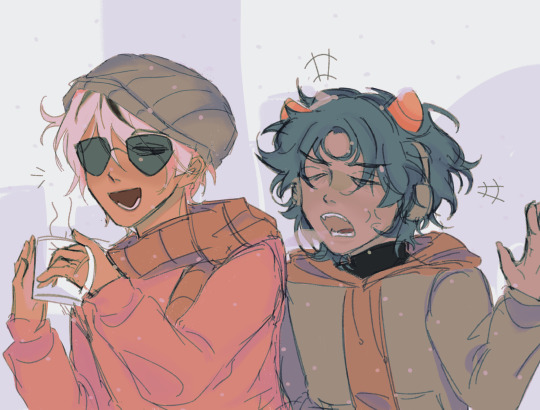
something something horrible hallmark romcom movies something something im balls deep in love with you
(davekat redraw from december 2023 .... og under the cut but It was my last post on here so)

#check the 4 month improvement gang#davekat#homestuck#dave strider#karkat vantas#art#guess who just started redrawing shit instead of doing his college apps!!!!!!#(I have no future)#whyd my style lowkey get yaoified (this is what shifting fandoms does to you)
267 notes
·
View notes
Text

is this anything
#homestuck#dirk strider#kankri vantas#ultkri au#homestuck beyond canon#wip for a future short comic of sorts#finally read the latest upd8. god this mans unsufferable#but it was p interesting#dirkkri#<- almost forgor to tag but its there in spirit
421 notes
·
View notes
Text
New single! Got hired to do another track for Requiem Cafe's homestuck event.
They asked me to do a dance track, so I wanted to try something i'm not as used to. Decided on a future funk feel, but I didn't want to jump through the hoops of licensing a city pop song so I just made one myself (with guitar from Ash) and sampled it. It came out kinda fun, but I'd have loved to have a little more time with it.
#i know the track art is more like vaporwave than future funk but i made it in canva in like 10 minutes by stealing stock photos#music#homestuck#i guess!
267 notes
·
View notes
Text
Y’know what? Jane was in her right to snap at everyone in A6A5A1. Jake only ever talked to her to vent, UNHEALTHY, and Roxy insinuating to try & hook up with Jake since Jane was now “so over him”, UNCALLED FOR, and then Calliborn sexually harassed her, fat-shamed her & mocked her about her fathers death, WHAT THE ACTUAL FUCK???
So yeah, Jane’s outburst was longgg overdue, but I fucks with OG Homestuck Jane, go off queen. Release the female rage.
#edited cause I just remembered the other term I mean to use that WASNT SA#watching her breakdown was kinda intense cause like#I could almost relate to a T with the way she was being treated#let my girl RAGE#she…girl bossed a bit too hard in the future BUT#that is not her guys trust#homestuck#jane crocker#kyd relive homestuck#kyd rambles
214 notes
·
View notes